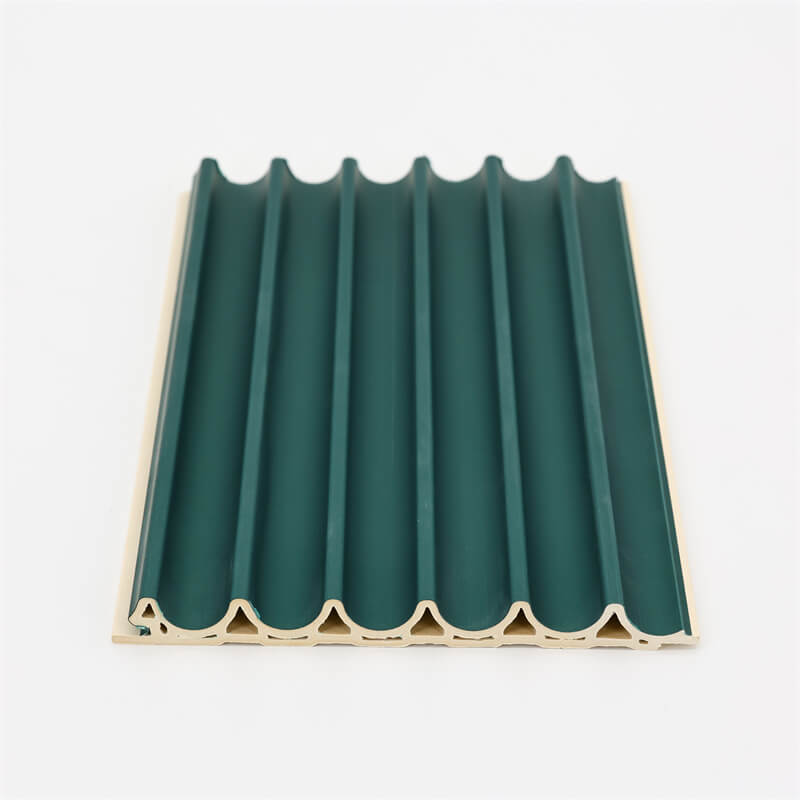
In today’s world, sustainability has become a top priority in various industries, including interior design and construction.
Homeowners and designers are increasingly seeking eco-friendly alternatives that combine style, functionality, and environmental consciousness.
WPC (Wood Plastic Composite) wall panels have emerged as a sustainable solution that addresses these needs.
This essay explores the green appeal of WPC wall panels, highlighting their eco-friendly features, stylish designs, durability, and contribution to a greener future.
I. Eco-Friendly Materials and Manufacturing:
One of the primary reasons why WPC wall panels are considered sustainable is their use of eco-friendly materials.
These panels are composed of a blend of recycled wood fibers and plastic, diverting waste materials from landfills and reducing the demand for virgin resources.
By utilizing recycled materials, WPC panels contribute to the preservation of natural forests and help minimize deforestation.
Moreover, the manufacturing process of WPC panels is designed to be environmentally conscious.
Energy-efficient methods are employed to reduce energy consumption, resulting in lower carbon emissions.
This commitment to sustainable manufacturing ensures that WPC wall panels have a reduced environmental impact compared to traditional wall materials.

II. Durability and Longevity:
Sustainability is not just about using eco-friendly materials; it also involves choosing products that are built to last.
WPC wall panels excel in this aspect due to their durability and longevity.
These panels are resistant to moisture, rot, and pests, making them highly suitable for both interior and exterior applications.
Unlike traditional wall materials, WPC panels do not warp, crack, or fade easily, ensuring that they maintain their aesthetic appeal over time.
By investing in durable WPC wall panels, homeowners can reduce the need for frequent replacements, thereby minimizing waste and extending the lifespan of their interior surfaces.
This longevity factor contributes to sustainable living by reducing resource consumption and waste generation.
III. Energy Efficiency and Insulation:
Another green advantage of WPC wall panels lies in their energy-efficient properties.
These panels offer excellent insulation, helping to regulate indoor temperatures and reduce energy consumption for heating and cooling.
The insulation provided by WPC panels contributes to improved energy efficiency and can lead to lower utility bills.
Moreover, the thermal efficiency of WPC wall panels enhances the overall comfort of living spaces, as they help maintain a consistent temperature and reduce drafts.
By choosing WPC panels, homeowners can create energy-efficient environments while reducing their carbon footprint.

IV. Recyclability and Circular Economy:
A key aspect of sustainability is the ability to recycle and reuse materials at the end of their lifespan.
WPC wall panels demonstrate their green appeal by being recyclable and contributing to a circular economy.
At the end of their usable life, these panels can be recycled and used in the production of new materials, minimizing waste and reducing the need for virgin resources.
The recyclability of WPC panels aligns with the principles of a circular economy, where materials are reused and repurposed rather than disposed of as waste.
By choosing WPC wall panels, homeowners actively participate in the creation of a sustainable and regenerative economy.
Sustainability and style go hand in hand with WPC wall panels.
These panels offer a green appeal through their use of eco-friendly materials, energy-efficient manufacturing processes, durability, and contribution to a circular economy.
By opting for WPC panels, homeowners can create stylish and sustainable living spaces that reduce their environmental impact without compromising on aesthetics or functionality.
As the world continues to prioritize sustainability, WPC wall panels stand as a shining example of how innovation and design can contribute to a greener future.
